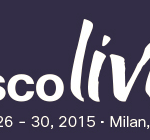During the first Italian Tech Field Day Extra (at Cisco Live 2015 in Milan) the company that we met was, of course, Cisco. For an entire day we had different sessions with different Cisco’s people and talk about their different products, but also their different solutions and approaches.
It was a full day (January 26th) from 9:00 to 17:00 with a bunch of interesting information (especially for me, where the networking part is usually the simplest part of my project, considering the medium size of Italian projects and environments).
 Instead of make a single post for each session I prefer comment all of them and then going deep (in a separated post) just on the one that has impress me more.
Instead of make a single post for each session I prefer comment all of them and then going deep (in a separated post) just on the one that has impress me more.
Pankaj Gupta, Senior Director, and Ben Strickland, Initiative Lead, introduce the new Cisco ONE Software Suite and discuss the strategy behind the new changes, considering also that Cisco is the 5th software company and the 3rd SaaS provider.
Cisco One Software will bring more business value, agility and innovation and financial predictability with a Pay-Per-Use model: instead of choosing from hundreds of separately priced software features, you can purchase a single Cisco ONE Software product. Instead of a single perpetual license tied to the lifetime of your hardware, this new model offer flexibility with a choice of licensing options. But it’s just a choice: you can still remain with the single products and features.
There are three different Cisco One suite:
Actually Cisco One is only for the software part, but in the future it may be adapted also for other type of products.
Joe Onisick, Principal Engineer, discusses software defined networking and the Cisco Application Centric Infrastructure (ACI) approach.
ACI is the Cisco’s SDN solution that facilitate rapid systems integration and customization for network services, monitoring, management, and orchestration. And also that delivers speed and agility when you deploy applications and business services. Flexibility, policy, and programmability are the hallmarks of each SDN solutions. Of course there are different SDN solutions and also NV solutions, ACI is just and more useful for Cisco customers.
But what I have really appreciated was the honesty of the talk: Joe admits that this kind of solution (and also other SDN solutions) are not for all, there ACI may have some limits and actually is not so used…
For more information about ACI and SDN see also this (Cisco) blog post: Is ACI Really SDN? One Point of View to Clarify the Conversation.
Todd Brannon, Director of Product Marketing, and Song Bac Toh, Product Manager, introduce Cisco Enterprise Cloud Suite and discuss the applications it is designed for.
Also we have discussed about public vs. private cloud, similarity to software defined networking, network containers and some common issues of cloud.
But what is really the Cisco Cloud Enterprise Suite? Introduced at Cisco Live Milan the Cisco ONE Enterprise Cloud Suite is an engineered software solution not a platform. It delivers a hybrid-ready private cloud software solution that contains out-of-box installation and content. Actually seems more an idea and an approach, instead of a products… but some concepts are interesting and could be nice see how it will grow and how it will be integrated with the new Cisco OONE approach.
For more information see also: Introducing Cisco ONE Enterprise Cloud Suite.
Jim McHugh, Vice President, and Raghu Nambiar, Distinguished Engineer, instead of talk too much about UCS (where lot of information already exist) have bring the discussion on the strategy around Cisco and big data. Discussions include storage, analytics, and impact on technologies like Wi-Fi.
Cisco’s strategy for Big Data is all around the infrastructure part (UCS and other compute resources) and the data and analytics funtions. Interesting is the Cisco UCS Director Express for Big Data that can deliver an entire Hadoop cluster with one single click.
Jagdish Girimaji, Senior Manager, and Darryl Sladden, Technical Marketing Engineer Manager, introduce the new functions and features in Cisco Connected Mobile Experience (CMX) version 10.0 and give a demonstration of the new user interface.
Cisco Connected Mobile Experiences (CMX) is a smart Wi-Fi solution that uses the Cisco wireless infrastructure to detect and locate smartphones, tablets, and other mobile devices. With it, your organization can directly serve personalized content to users.
For example, this solution personalizes the shopping journey for consumers. It engages shoppers with relevant mobile content offered in real time, based on in-store location. This powerful solution also captures location analytics to give visibility into shopper movements and behavior patterns.
Kapil Bakshi, Distinguished Systems Engineer, and John McDonough, Technical Marketing Engineer, introduce Intercloud and Intercloud Fabric and give and overview of the function and use cases for the product.
Cisco Intercloud Fabric permit to integrate a private cloud with clouds run by more than one service provider, with consistent network and security policies across private and public clouds. It try to solve several security issues and dilemma.
On the private part it support different type of hypervisors: VMware vSphere, Microsoft Hyper-V, KVM and also Xen. On the public part there are native API for Azure and AWS, but it’s also possible add other type of cloud.
It’s an interesting solution for some specific user cases:
- Capacity augmentation: During the year, you may need more capacity, for example, during peak shopping seasons, or more computing power to generate quarterly reports. You also may need more capacity when your contact center is handling a peak numbers of calls and needs more support from your data center, or when you’re opening a new facility that strains your existing data center. With Cisco Intercloud Fabric for Business, the capacity you add will be indistinguishable from what your own data center already provides. In this hybrid cloud, the public and private systems merge transparently, both in what your employees can do using it, and in your management of it.
- Development and testing: Your encapsulated data center in a public cloud is an excellent place to test and develop new software. Development and testing don’t drain data center resources that your company needs for day-to-day operations, and when you’re finished, it is easy to move the new software into your regular operations because the environment in which it was tested is the same as your existing production environment.
- Disaster recovery: If a disaster occurs, having your applications and basic data center configuration available in a transparent extension of your on- premises data center will let you regenerate your policies and rules, recover much of your data, and continue to work even if your primary data center is down for some time
Could become, in the future, also an interesting solution for cloud migration, when will be possible connect two public cloud (actually it’s limited only to connect a private part to one public cloud).
Jay Chokshi, Senior Product Manager, introduces the Cisco ISR 4000 series router. Also discussed is the internal architecture, ability to run applications, hypervisor capabilities, and other multiservices platform capabilities.
The new Cisco ISR 4000 series is a converged branch platform with industry-leading network, compute, and WAN services that try to solve some common issues in branch office: the righsizing of the WAN and also of the network device.
The appliance is interesting in connectivity options, but more interesting in features: Cisco Application Experience (AX) includes Intelligent Path Control, WAN Optimization, and Intelligent Caching. There are several network traffic optimizations included, for example, specific optimization for Office 365.
The voice license includes CME, SRST, and CUBE. And the security license includes firewall, intrusion prevention system (IPS), and VPN.
More interesting is how those services are implemented, by using virtualized service containers where specific feature and application are deployed in container (yes, like with Dockers, at least in the main concept) on the physical device. Service Containers use virtualization technology to provide a hosting environment on Cisco routers & switches for applications which may be developed and released independent of platform release cycles.
Simon Tompson, Technical Evangelist, discusses some of the recent updates to the Cisco Meraki product line. Also shown are Meraki Enterprise features and a demonstration of the Meraki Dashboard.
Meraki is really an interesting solution, coming from an acquisition and deserve a dedicated post.
Cisco Enterprise and new standards
Peter Jones, Principal Engineer and Chairman of the NBaseT Working Group, introduces NBaseT and Cisco Multigigabit Ethernet and discusses the technical challenges to adoption. Also included is a discussion about 802.11ac gigabit wireless and how it is driving the proposal for Multigigabit Ethernet.
For more information see also:
Apart the solution itself, what I have really appreciated of this session was the explanation of the standardization process, before the standard approval… It was interesting see how much effort is needed to think, design, implement a new technology and then trying to make it a new standard.



